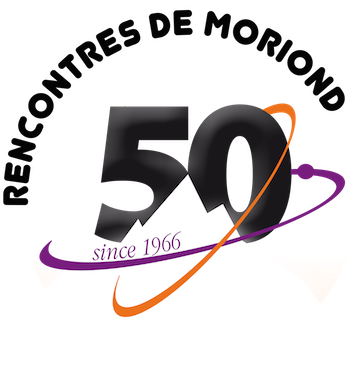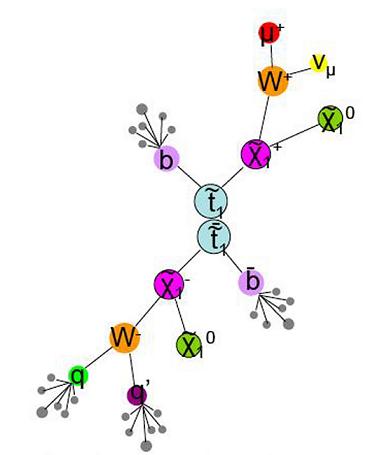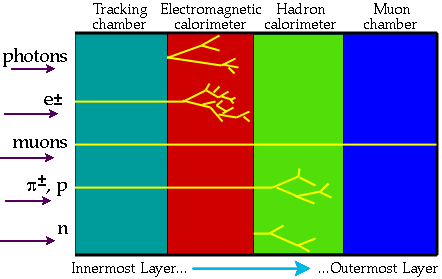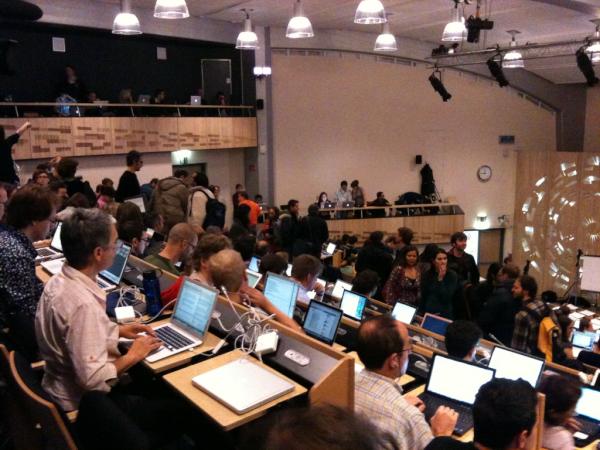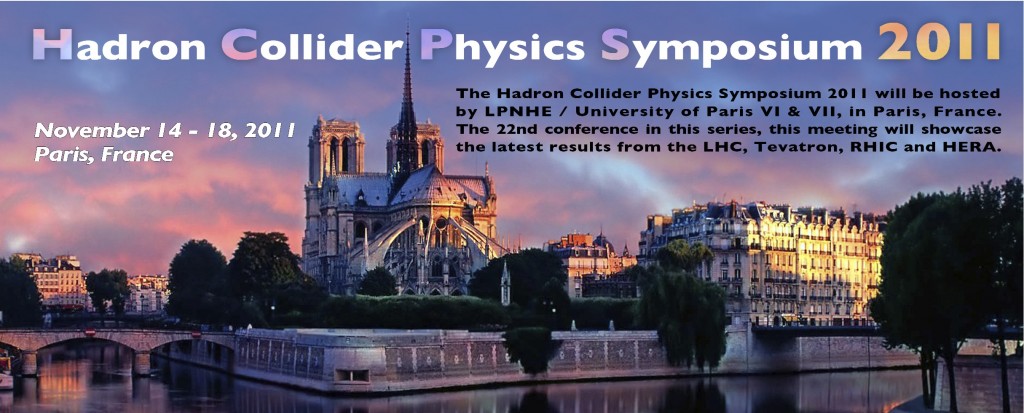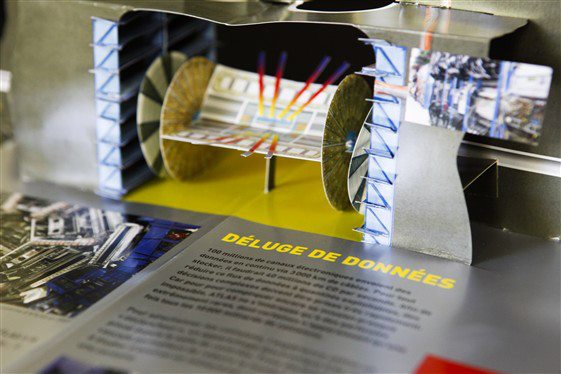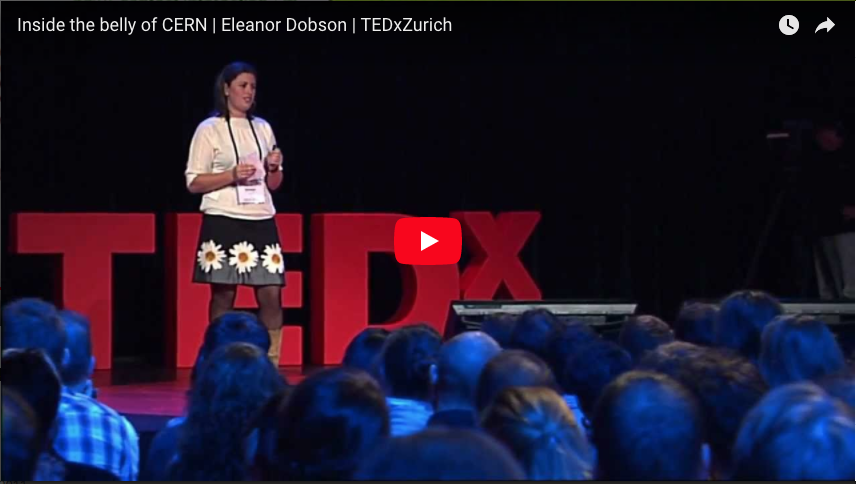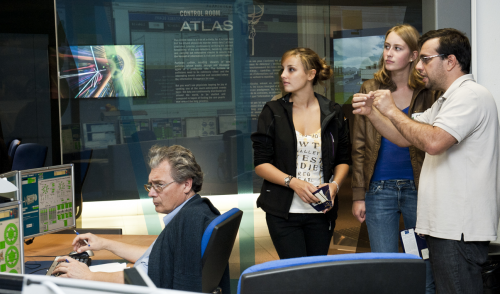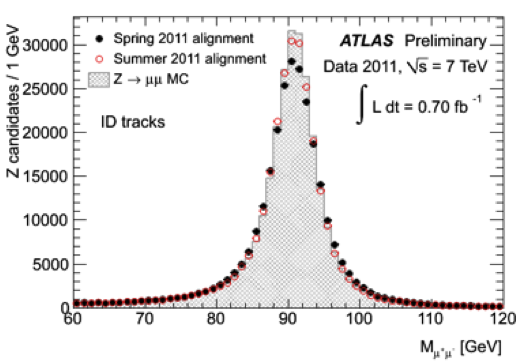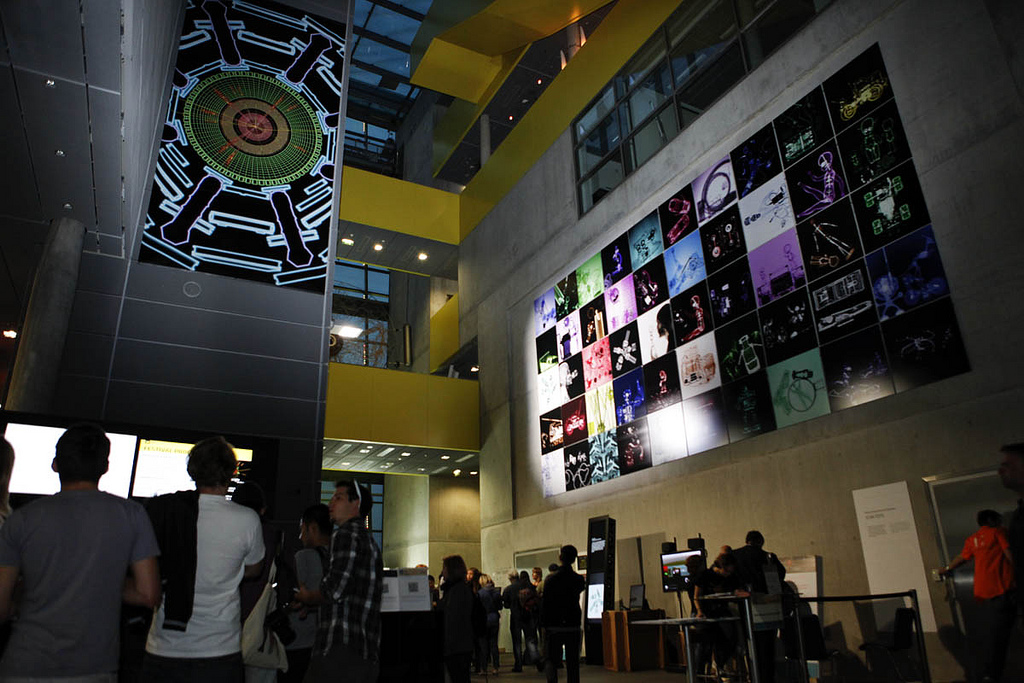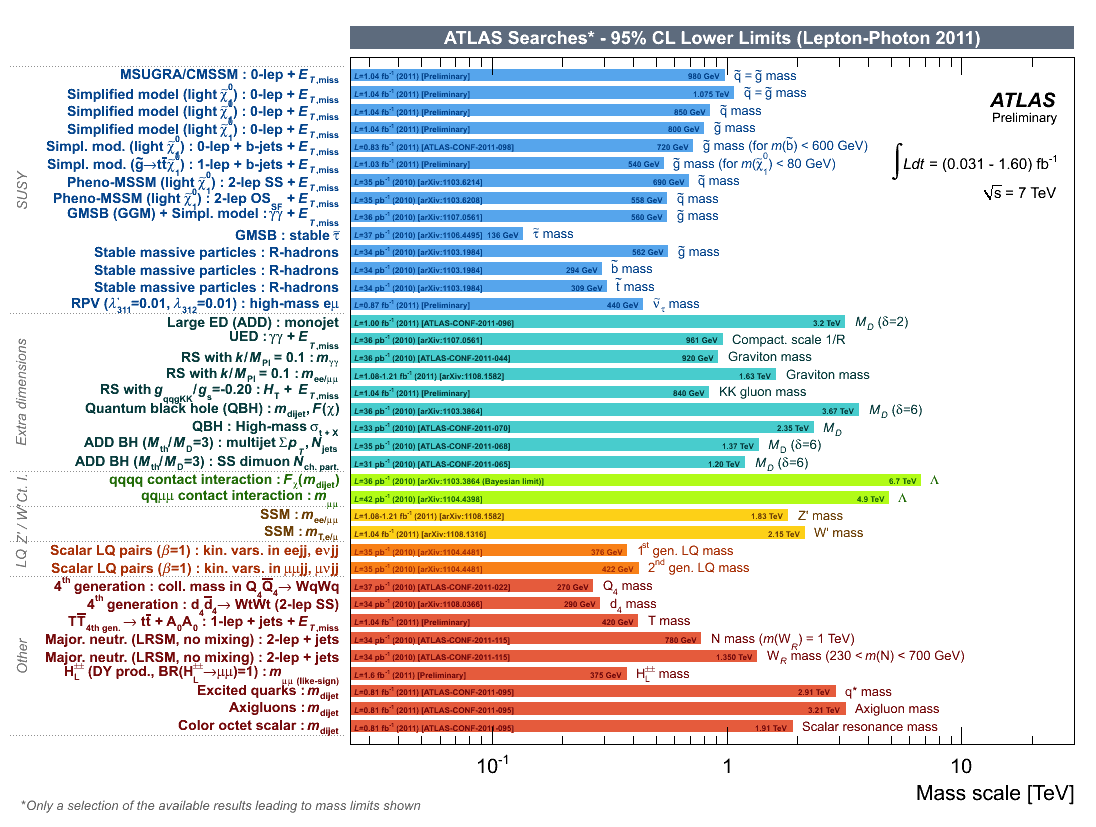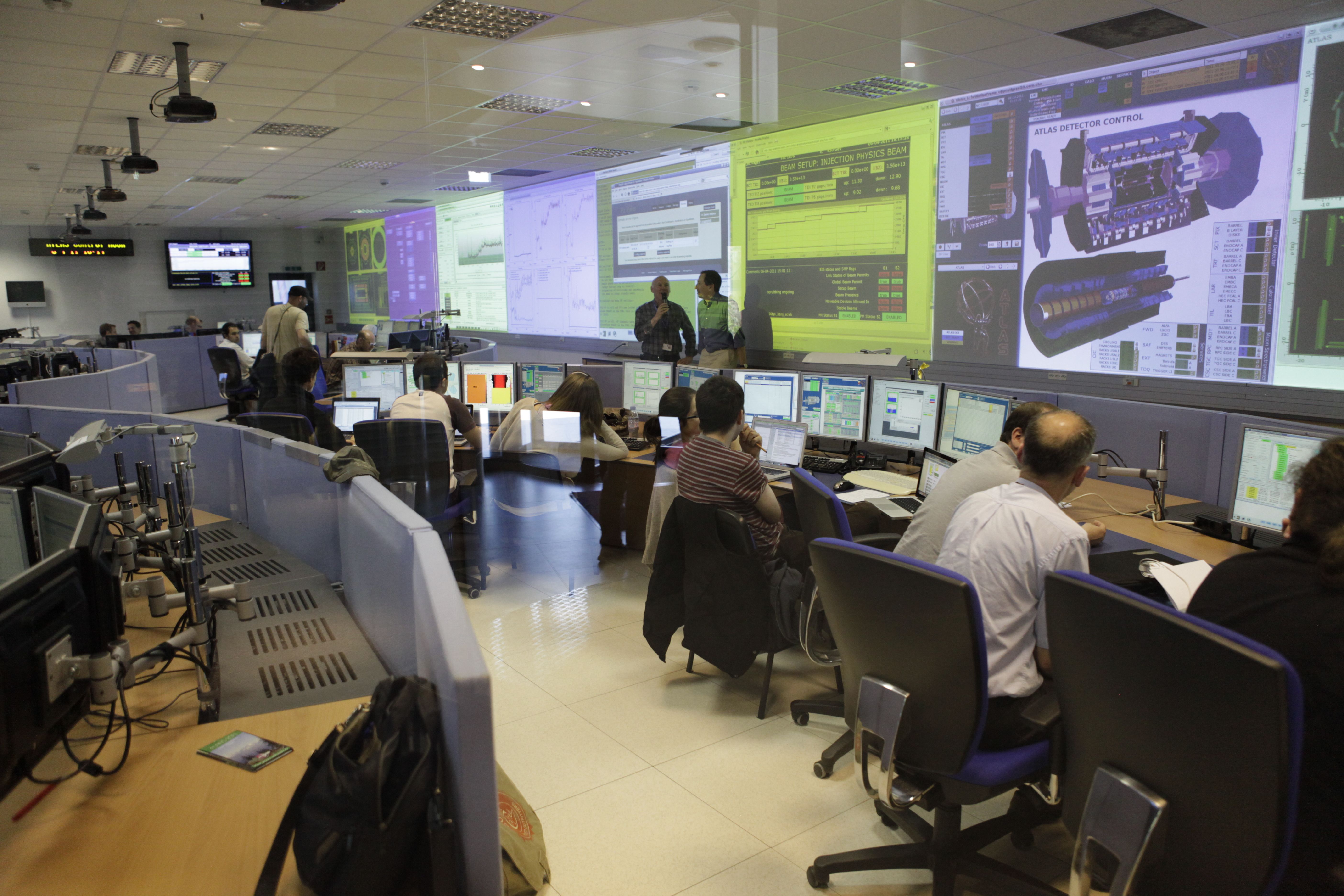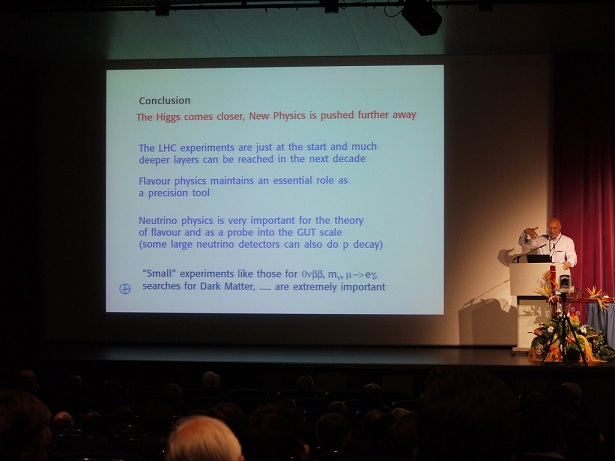Blog
Mystical Moriond
As a young physicist not many conferences have the same mystical status as Rencontres de Moriond. This gathering of physicists from all areas of particle physics is one of most anticipated events of the year. More a gathering than a conference, Moriond started in 1966 and has inspired many similar events. Presentations, time for discussion and recreation is combined to inspire and foster collaboration and new ideas. Another element is the meeting between young and more experienced scientists. Nearly half of the talks are given by young participants below 35 like myself. I was invited by the ATLAS collaboration to present our latest results on a search for a type of long-lived particles that has meant a lot to me for the last two years.
Blog |
From 0-60 in 10 million seconds! – Part 2
This is continuing from the previous post, where I discussed how we convert data collected by ATLAS into usable objects. Here I explain the steps to get a Physics result. I can now use our data sample to prove/disprove the predictions of Supersymmetry (SUSY), string theory or what have you. What steps do I follow?
Blog |
From 0-60 in 10 million seconds! – Part 1
OK, so I’ll try to give a flavour of how the data that we collect gets turned into a published result. As the title indicates, it takes a while! The post got very long, so I have split it in two parts. The first will talk about reconstructing data, and the second will explain the analysis stage.
Blog |
7 or 8 TeV, a thousand terabyte question!
A very happy new year to the readers of this blog. As we start 2012, hoping to finally find the elusive Higgs boson and other signatures of new physics, an important question needs to be answered first - are we going to have collisions at a center of mass energy of 7 or 8 TeV?
Blog |
Tweeting live #Higgs boson updates from #CERN
“If it’s just a fluctuation of background, it will take a lot of data to kill.” Dr. Fabiola Gianotti, spokesperson for the ATLAS collaboration, made this statement on Dec. 13, 2011 during a special seminar I attended at CERN. Within the minute that followed, I hurriedly concocted a tweet, tacked on #Higgs and #CERN hashtags, and sent Fabiola’s weighty comment out onto the WWW.
Blog |
Joining forces in the search for the Higgs
Today we witnessed a landmark LHC first: At the HCP conference in Paris, friendly rivals, the ATLAS and CMS collaborations, came together to present a joint result! This ATLAS-CMS combined Higgs search was motivated by the fact that pooling the dataset increases our chances of excluding or finding the Higgs boson over those of a single experiment. This is the first example of this kind of scientific collaboration at the LHC, and the success of the whole endeavor hinged on a whole host of thorny issues being tackled…
Blog |
Charming results that have got everybody thinking…
I’m writing from the annual Hadron Collider Physics Symposium, which began on Monday in Paris, France. It’s organised jointly by LPNHE and the University of Paris VI & VII, with an excellent location right in the heart of the Latin Quarter. HCP is a fun conference with only plenary talks, which means that I’ve had the chance to attend talks on a wide range of subjects including many quite remote from my usual areas of expertise.
Blog |
The power of perception
If you ask a child to draw a physicist, they’ll usually draw you a disheveled man in a lab coat. But looking around the hundreds of physicists eating lunch at CERN today, I saw many women, only one or two that could be classified as disheveled, and zero lab coats. Yet this image persists.
Blog |
ATLAS in Paris for a pop-up launch
It’s not every day you get to explain ATLAS to a group of journalists with just a pop-up book as a prop. But, as some readers might already know, this is no ordinary pop-up book. ATLAS and the LHC leap from the page in incredible detail thanks to paper engineer Anton Radevsky’s wonderful designs. A new edition of the book has just been released in French, so at the end of last month I found myself travelling in to the centre of Paris from Orsay for the press launch.
Blog |
The longest shift
The clock just turned 2:00 a.m., again, on LHC Page One – the machine’s online status viewer – and I’m pondering just how I ended up on the longest shift of the year. I normally love this evening, snuggling under a warm comforter for that extra hour of late-autumn sleep. But, this year, on the very hour we ‘fall back’, I am cuddling with the controls of ATLAS’s 46 meter long muon spectrometer, a bar of chocolate and an extra cup of coffee. So be it.
Blog |
Dispatch from the dispatch: Musings from the Tevatron’s final run
The first time I drove to Fermilab as a grad student, I got kind of lost. However, once I remembered my adviser’s words of advice, it was suddenly easy to find the strangely shaped Wilson Hall, a.k.a. “the highrise sticking out of the Prairies”. During my PhD years with the CDF Collaboration, I went there many a time – to attend meetings, to take shifts. The Chicago area summers were harsh, and so were the winters. On early morning shifts over the Christmas week, I realized that all too well. CDF had over five hundred collaborators at that time and this was my first introduction to a big experiment. Despite its size, everyone still seemed to know each other and it was one big happy family.
Blog |
The Tevatron: Goodnight but not goodbye
The Tevatron collider, the scientific predecessor of the LHC, was shut down last Friday after 26 years of operations. Situated at the Fermi National Accelerator Laboratory (Fermilab) outside of Chicago, Illinois, the Tevatron collided protons with antiprotons at a center-of-mass energy just shy of 2 TeV. While it still held the title of the world’s highest energy colliding beams, it was the intellectual home of hundreds of scientists and students working as part of the CDF and D0 collaborations.
Blog |
“La Nuit des Chercheurs” (Researchers’ Night)
Evening, Friday September 23rd. I came from Saclay (near Paris) to participate in the ‘Researchers’ Night’ event taking place across CERN as part of the European Researchers’ Night initiative. Students aged 13 to 18 were on their way from all around the local area to learn about what on earth it is we do at the mysterious “Point 1” – ATLAS’ home on the LHC ring. Three different groups of 10 or so students were to stay with the ATLAS team in the experiment’s control room from 6:00 p.m. until midnight, helping shifters to take data and monitor the experiment…
Blog |
ATLAS never sleeps
Working in an international laboratory like CERN is incredibly exciting, and I’m not just talking about Higgs hunting. People in the outside world are endlessly curious about what happens on the sprawling two-kilometre-long site, and I get asked all kinds of questions, ranging from the funny to the profound.
Blog |
Re-hashing reconstruction
Now that the big summer conferences are under our belts, we’re busy reprocessing the data ATLAS has taken so far in 2011. The raw data we collect at ATLAS – basically millions of electrical signal values from the different bits of the detector – has to be treated (‘reconstructed’) to turn it into meaningful physics data that can be analyzed for signs of new physics.
Blog |
Ars Atlastronica
So I’m back from the Ars Electronica 2011 festival in Linz, Austria. This year the guest of honor was CERN, to kickstart a cultural partnership which will endure over the next three years. The event was amazing, and the organization spotless. As Claudia mentioned in a previous post, CERN was well represented visually at the festival, mainly via a strong display of ATLAS multimedia throughout the many exhibit halls and events.
Blog |
Science and art collide at Ars Electronica
Located in Linz, Austria, Ars Electronica is an exhibition centre and creative lab which “has been investigating the consequences of the Digital Revolution” since the late 1970’s. Ars Electronica holds a yearly festival that attracts thousands of people from Austria, Germany and the rest of the world. This year, the theme of the festival, which is happening in collaboration with CERN, is ‘Origin – how it all begins’.
Blog |
Philosophising physics
Last Monday (August 22), within a tight 35-minute allocation, ATLAS’ Henri Bachacou presented the entirety of the results from ‘Beyond the Standard Model’ searches for BOTH the ATLAS and CMS experiments, to the Lepton Photon conference in Mumbai, India. This included results of studies on Supersymmetry, strong gravity, heavy resonances and long-lived particles, and was a staggering amount of information to convey in an extremely limited amount of time. Henri did a great job, firing through slides, and guiding the audience through the most up-to-date results from the wide range of exotic topics. He did have one thing on his side, however… from each search, from each physics topic and from each experiment, the results came back the same: Has the LHC seen anything beyond the standard model yet? Nope.
Blog |
Higgs results from Lepton Photon
The Lepton Photon 2011 conference began on Monday in Mumbai, India. Over 400 physicists from all over the world (including me!) gathered to hear the latest results. One result in particular -- news on the search for the Higgs boson -- was foremost in people's minds, and rather than prolong the suspense further, the talks on the Higgs were scheduled right after the welcoming speeches.
Blog |
Top down: Reflections on a long and sleepless analysis journey
For the last months (which feel like years…) I’ve been working, within a small group of people, on the precision measurement of the top quark pair production cross section, and if you think that sounds complicated – the German word is “Top-Quark-Paarproduktionswechselwirkungsquerschnitt”.
Blog |
Frantic for femtobarns...
In particle physics, we describe the number of interesting particle collisions that we have in our data in terms of the "integrated luminosity", which is measured in units called inverse femtobarns. In the whole of 2010, the LHC delivered about 0.04 inverse femtobarns (about 3 million million collisions). Nowadays, it can deliver twice that in a single day!
Blog |
A look back at the EPS
I happened to run into Andrey Korytov after his eagerly awaited CMS Higgs talk. No, CMS had not yet seen the Higgs, and ATLAS could breathe a sigh of relief.
Blog |
A view inside the ATLAS Higgs combination
Well it's been a few days since the Higgs presentations at EPS, and I'm just recovering from the lack of sleep. It's ironic that I have a newborn daughter, and my sleep deprivation is due to work.
Blog |
Arrival at EPS
When I was invited to give a talk on behalf of ATLAS at this summer’s European Physical Society High Energy Physics conference (EPS), I wasn’t really sure what to expect. Most conferences I have been to are relatively intimate affairs where you have long discussions after every talk and then everybody trots down to the pub together to discuss the day’s results. EPS, though, is one of the largest particle physics conferences in the world. Or at least I reckon it is, having eyeballed the number of participants registered on the website, hailing from all sorts of fields ranging from astrophysics to ultra relativistic ions to our very own LHC proton-proton collider physics.
Blog |

